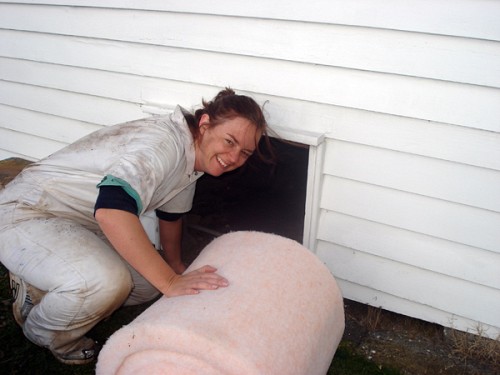The 3 Most Vital Home Improvements to Make this Fall

Funny how Labor Day is such a two-sided holiday. Folks tend to celebrate it by engaging in iconic summer activities – a picnic, hike, or visit to their favorite swimming spot. Yet this day really marks the beginning of autumn. And the beginning of autumn means the approach of colder weather (notice how cool the mornings are starting to get?) … and with that, the time to heat your home. Which leads us to the 3 essential heating-related home improvements you must make this fall.
- Fix Any Leaks
What does the word “leak” mean to you in relation to your home? Whether you have a plumbing leak or a breeze that comes in around an unsealed window, you will find the effect is remarkably similar. Both are capable of wasting a surprisingly large amount of valuable resources (water in the first case and heating fuel in the second), increasing your carbon footprint and costing you money in a way that is totally unnecessary.
The other thing that these two household nuisances have in common is that they tend to be quite easy to fix. The most common types of plumbing leakage come from either a toilet or a bathroom or kitchen faucet; repair of the fixture can often be a DIY project or a relatively uncomplicated job for a good professional plumber.
Air leaks can often be taken care of by a handy homeowner (or renter!) too. Apply sealant, like putty, caulk, or V-seal weatherstripping, to block the flow of exterior air. This will help cut down on the need for both heating in winter and air conditioning in summer.
- Insulate
Improve the efficiency of your heating, ventilation, and air conditioning system by insulating vulnerable areas – notably your attic, crawl space, the opening for your dryer vent pipe, and so on -- and some places that might not even have occurred to you, such as around electric boxes and recessed lighting fixtures.
Don’t forget to insulate critical components of your heating and cooling setup, such as the plenum and your ductwork. (While you’re at it, check whether the ductwork needs repair or upgrading; as much as 40 percent of heat can be lost en route from your furnace or heat pump to the rooms of your home.) It is recommended to consult a local HVAC company to diagnose the problem to ensure that there is adequate ventilation; this will discourage mold growth.
An eco-friendly type of insulation you might not hear much about on most home improvement websites is what we’d like to term “self-insulation.” Keep warm with minimal harm to the atmosphere’s ozone layer by bundling your body in light, comfortable, warm layers of clothing.
- Install a Carbon Monoxide Alarm
Once your house has been sealed up tight, you should be nice and cozy. One major drawback to this preparation, though, is that a well-sealed house keeps warmth inside but it also fosters carbon monoxide (CO) build-up when you use any fuel-combustion appliance – for example, gas or wood stoves, fireplaces, or kerosene lanterns, indoors.
This poisonous gas is colorless, odorless, and tasteless, making it impossible for anyone in your home to detect it unaided. Installation of CO alarms will help protect you and your loved ones. Ideally, one of these alarms should be installed in every bedroom, as well as in the room where a fuel-combustion appliance is operated.
Why is this measure, which is the most literally vital (as in “potentially life-saving”), listed last? The answer is simple. Repairing air leaks and insulating your house are very effective ways to reduce your heating costs. However, they can lead to carbon monoxide issues; in the same way that they prevent warmed air from escaping, they will tend to keep CO inside the house as well.
Looking for a Pro? Call us (866) 441-6648

Heating & cooling Average Costs
HVAC Contractors Experiences

Deck Repair On A Deadline

Shower Rail Installation Keeps My Inlaws Safe In Their Own Home



